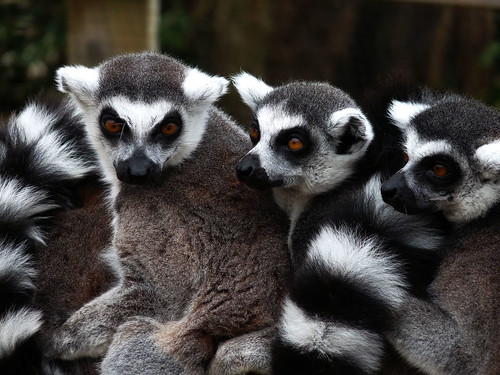With increasing temperatures, climate change has caused a large number of changes in the Madagascan area. The island has become warmer, drier, and at large risk of forest fires, desertification and mass extinction. Studies have shown that areas with a large number of endemic species are more vulnerable to climate change than other areas [1]. As Madagascar is situated at 20o south of the equator, species shifting to cooler climates would have to move towards the south end of the island. However, Madagascar has a highly fragmented environment, with the south end of the island experiencing the harshest conditions of wind and water scarcity [2]. This has also been made worse by the large amounts of deforestation that has occurred on the island. It has been made almost impossible in some cases for species to shift their range across the island [3].
Upward migration is still an option for some species such as reptiles, which can move to higher altitudes for a cooler climate. However, due to deforestation and changes in vegetation due to climate change, not all species have this option. [4,5].
 |
The future of Madagascar and other biodiversity hotspot's endemic species looks bleak...although scientists are constantly calculating ways to conserve endangered species. A mass relocation of species via assisted migration could be the answer to this problem [5]. For the more specialist species, it would be harder to find an environment suited for their needs and adaptations. However, assisted migration is a very good starting point on the conservation front!
Watch MADAGASCAR (documentary) now on BBC iplayer!
References:
[1] Malcolm et al (2006), 'Global warming and extinctions of endemic species from biodiversity hotspots', Society for Conservation Biology, 20, 538-548.
[2] http://www.bbc.co.uk/iplayer/episode/b00z03pl/Madagascar_Land_of_Heat_and_Dust/
[3] Hannah et al (2008), 'Climate change adaptation for conservation in Madagascar', Global change biology, 4, 590-594.
[4] Ingram, J and T. Dawson (2005), 'Climate change impacts and vegetation response on the island of Madagascar', Philosophical transactions of the royal society, 363, 55-59.
[5] http://www.livescience.com/10575-species-relocated-prevent-extinction.html
Love the documentary... saw it the other day!
ReplyDeleteMadagascar is an interesting ecosystem in itself; but in your opinion do you find climate change or direct human actions via deforestation as the biggest freight to biodiversity?
I ask this because the case study is important to the debate on biofuels, food production and security and like you have so nicely highlighted biodiversity loss.
This site is just one example of all these arguments coming together as South Korea is widely known to purchased other country's lands to sustain their own food demands: http://www.time.com/time/world/article/0,8599,1861145,00.html.
Nice Blog! Happy New Year!
I think at the moment human influence is the problem! But come 50 years climate change isn't going to help the problem! The biggest issue really is the combination of human interference and climate change together!
ReplyDelete